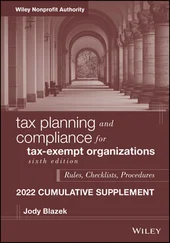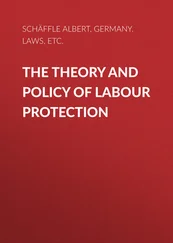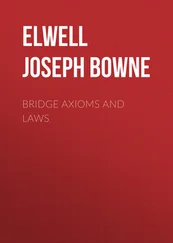Jakob Leimgruber / Rainer Schulze
Language planning and policy in Quebec
A comparative perspective with views from Wales and Singapore
Narr Francke Attempto Verlag Tübingen
[bad img format]
© 2019 • Narr Francke Attempto Verlag GmbH + Co. KG
Dischingerweg 5 • D-72070 Tübingen
www.francke.de• info@francke.de
Das Werk einschließlich aller seiner Teile ist urheberrechtlich geschützt. Jede Verwertung außerhalb der engen Grenzen des Urheberrechtsgesetzes ist ohne Zustimmung des Verlages unzulässig und strafbar. Das gilt insbesondere für Vervielfältigungen, Übersetzungen, Mikroverfilmungen und die Einspeicherung und Verarbeitung in elektronischen Systemen.
E-Book-Produktion: pagina GmbH, Tübingen
ePub-ISBN 978-3-8233-0185-1
For Marie, Lukas, and David
Many people have helped me in the course of writing this book, and on the path to the habilitation thesis that forms its basis. I would like to express my gratitude to Christian Mair, who did his utmost mentoring me in the course of the research leading up to this final piece of work. His constant encouragement and extremely pertinent feedback were invaluable. He also relentlessly supported me in the course of (successful!) funding applications for the fieldwork phase.
I am also indebted to Charles Boberg, who was my local contact at McGill University, and whose insights on the sociolinguistic situation in Quebec helped shape my understanding of the realities there. He was also instrumental in guiding me along the path to successful data collection during fieldwork. I also thank the Department of Linguistics and its head, Bernard Schwartz, for their hospitality during the fieldwork phase.
The fieldwork in Canada, consisting of an entire year spent at McGill University’s Department of Linguistics, was made possible by a European Research Council Marie Curie International Outgoing Fellowship (7 thFramework Programme, project no. 327100), running from 2013-09-01 to 2015-08-31, and including an outgoing phase in Montreal and a return phase in Freiburg. I thank the funding agency for their generous commitment. I also thank the German Research Foundation (DFG) for making possible the pilot study by financing an initial two-week stay in Montreal in September 2012. The publication of this book was supported by a generous grant from the Wissenschaftliche Gesellschaft of the University of Freiburg, Germany.
Countless other people have influenced my work in one way or another. For want of space, I shall here just acknowledge the help of Victor Fernández Mallat for assisting with the dissemination of the questionnaire and generally being of help in understanding Montreal, Joyce Xiao and Tang Xinsheng for their data collection and processing work, Anna Kristina Hultgren for help with Swedish orthography reforms, and Laura Terassa, David Lorenz and the members of the Freiburg RnB group for support with statistical analyses. Debra Titone and her team in McGill’s psycholinguistics lab are responsible for drawing my attention to the potential of eye-tracking methods in linguistic landscape research.
Finally, I’d like to thank my parents, for always believing in me and for thoroughly proofreading these pages, and my wife, Marie, for her unfailing support in looking after me and the two boys. Without her constant encouragement, it is doubtful this piece of work would have made it into its present form.
Figure 1.1: Historic French provinces (Charbonneau and Guillemette, 1994, 164).
Figure 2.1: A map of Canada showing Quebec.
Figure 2.2: Poster advertising emigration to Canada in Swedish (from Gagnon, 2016). The orthography used places the poster before the spelling reform of 1906.
Figure 2.3: Proportion (percent) of Aboriginal population by language use (National Household Survey 2011).
Figure 3.1: The Integrative framework proposed by Hornberger (2006, 29): language planning and policy types are in regular typeface, approaches in italics, and goals in bold; Hornberger’s own comments are in those in (parentheses). The four elements of the matrix by Haugen (1983) are headed by double-underlined small-capital headings added by Hornberger.
Figure 4.1: Locations of the 1 101 signs photographed. Note the clear bias towards Greater Montreal, as well as the relative sparsity of data from other parts of the province.
Figure 4.2: Four kinds of stops sign found in the province. Top left: standard arrêt sign, Mile-End; top right: stop sign, Kahnawà:ke; bottom left: stop/testan sign, Kahnawà:ke; bottom right: arrêt/stop sign, Roxboro.
Figure 5.1: Self-declared proficiency in the ‘other’ language.
Figure 5.2: Self-declared proficiency in the ‘other’ language, by speech community and age group.
Figure 5.3: Age-grading in agreement levels to the statement ‘Bill 101 was necessary’.
Increasing disagreement to the left of the scale, increasing agreement to the right; neutral responses in the centre.
Figure 5.4: Correlation between average self-declared proficiencies in the ‘other’ language and agreement levels with the statement ‘I think carefully about which language to use when first speaking to someone I don’t know’. Francophones: R_{adj}^{2} = 0.05368, p = 0.001462, Anglophones: R_{adj}^{2} = 0.03646, p = 0.0001961.
Figure 5.5: Age-grading across speech communities in agreement levels to the statement ‘Bill 101 was necessary’.
Figure 5.6: Geolocation of the signs collected in the Montreal metropolitan region.
Figure 5.7: Percentage of speakers who have French as their first official language spoken, province of Quebec.
Figure 5.8: Percentage of speakers declaring English as their only mother tongue, Montreal Census Metropolitan Area.
Figure 5.9: Percentage of speakers declaring a language other than French or English as their home language, Montreal Census Metropolitan Area.
Figure 5.10: Signs inside an AMT carriage on the Vaudreuil line. The electronic information panel displays the next station (in French only). The poster admonishing passengers to give up their seats to persons in need is in French only, too. The sign displaying information on how to carry out an emergency call is bilingual, with French slightly larger than the English version and placed above it.
Figure 5.11: Example of a semi-matched advertising billboard (from Vingron et al. 2018).
Figure 5.12: Fixations over time, by L1, for the set of ‘naturalistic’ signs from Montreal’s linguistic landscape. The horizontal axis shows the 8-second viewing period. Note, in particular, the fixations on French and English in the category ‘bilingual signs’.
Figure 6.1: Comparison through the interactive policy process (Figure 1.2 in Morris 2010, 13).
Figure 6.2: By principal area.
Figure 6.3: By electoral ward.
Figure 6.4: Geographical proportional distribution of Welsh speakers (percentages). Data from the 2011 census, images from Commissioner (2015, 9–10).
Figure 6.5: Percentage of population with knowledge of Welsh, by age group, for the past seven censuses.
Figure 6.6: Language most commonly spoken at home, as a percentage of all households. Data from 10-year census (1980–2010) and from the General Household Survey 2015. ‘Dialects’ refers to any variety of Chinese other than Mandarin.
Figure 7.1: Evolution of net migration for the province of Quebec, showing both international and interprovincial migration, overlaid with the total net migration figure.
Table 1.1: Province of origin of early French settlers (Charbonneau and Guillemette, 1994, 169).
Table 2.1: Percent of responses to mother tongue and language spoken most often at home (single mother tongue responses only, i.e. excluding respondents indicating more than one mother tongue), in the 2011 census, by province/territory.
Читать дальше












